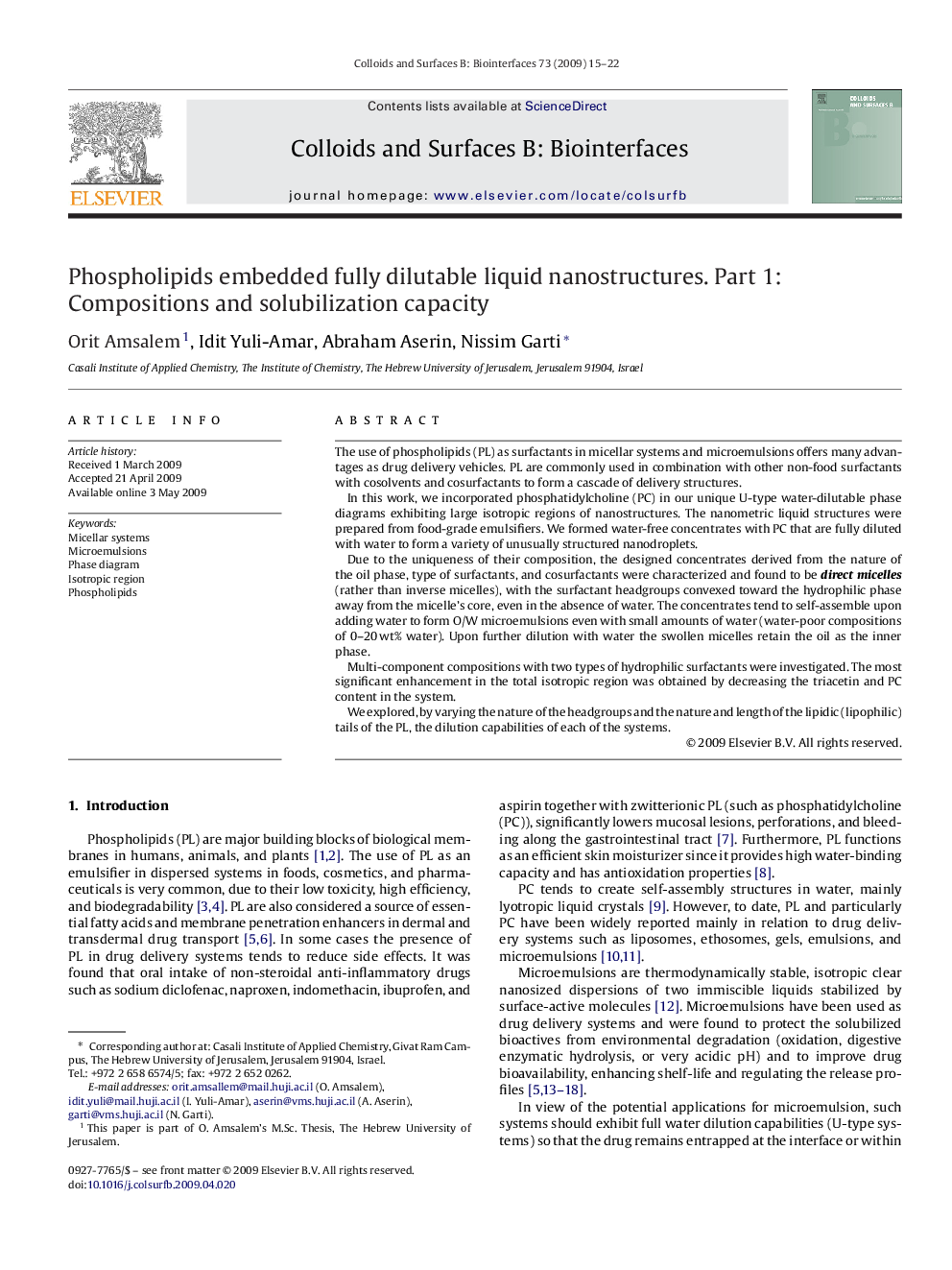| Article ID | Journal | Published Year | Pages | File Type |
|---|---|---|---|---|
| 601630 | Colloids and Surfaces B: Biointerfaces | 2009 | 8 Pages |
The use of phospholipids (PL) as surfactants in micellar systems and microemulsions offers many advantages as drug delivery vehicles. PL are commonly used in combination with other non-food surfactants with cosolvents and cosurfactants to form a cascade of delivery structures.In this work, we incorporated phosphatidylcholine (PC) in our unique U-type water-dilutable phase diagrams exhibiting large isotropic regions of nanostructures. The nanometric liquid structures were prepared from food-grade emulsifiers. We formed water-free concentrates with PC that are fully diluted with water to form a variety of unusually structured nanodroplets.Due to the uniqueness of their composition, the designed concentrates derived from the nature of the oil phase, type of surfactants, and cosurfactants were characterized and found to be direct micelles (rather than inverse micelles), with the surfactant headgroups convexed toward the hydrophilic phase away from the micelle's core, even in the absence of water. The concentrates tend to self-assemble upon adding water to form O/W microemulsions even with small amounts of water (water-poor compositions of 0–20 wt% water). Upon further dilution with water the swollen micelles retain the oil as the inner phase.Multi-component compositions with two types of hydrophilic surfactants were investigated. The most significant enhancement in the total isotropic region was obtained by decreasing the triacetin and PC content in the system.We explored, by varying the nature of the headgroups and the nature and length of the lipidic (lipophilic) tails of the PL, the dilution capabilities of each of the systems.
